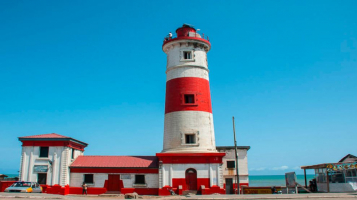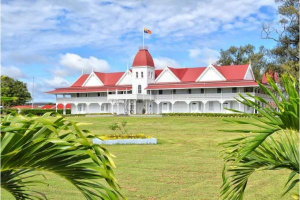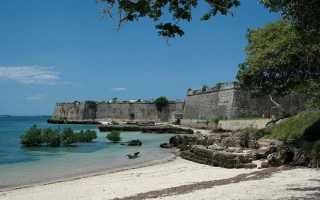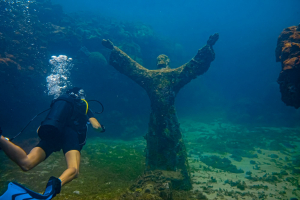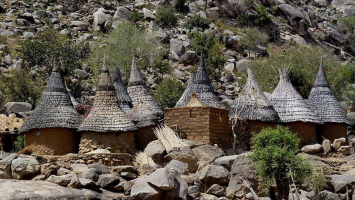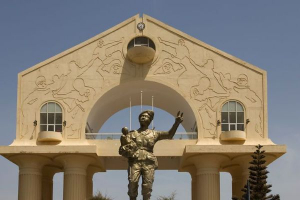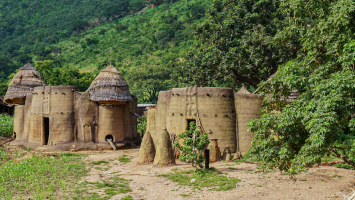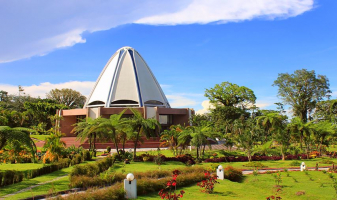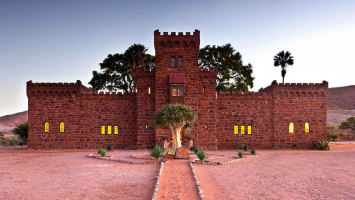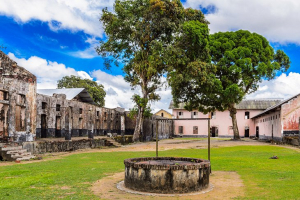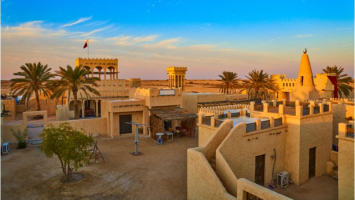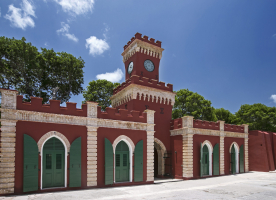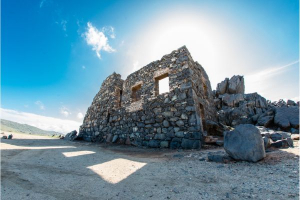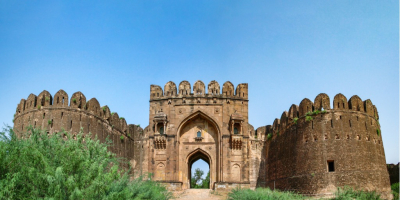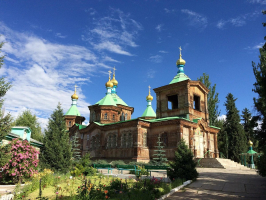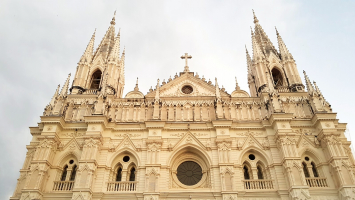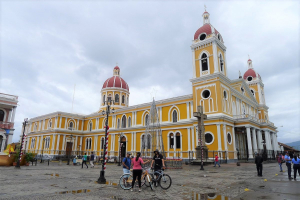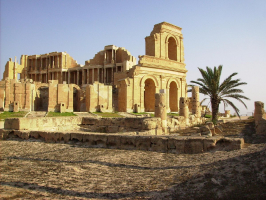Top 7 Most Famous Historical Sites in Botswana
The most prominent historical monuments in Botswana are a collection of gigantic baobab trees, giant-size footprints petrified in rock, salt flats, and the ... read more...Kalahari deserts, among other notable sites and monuments. Botswana is the ideal destination for travellers looking for both natural and man-made African monuments, such as the well-known and popularly climbed Kgale Hill and Tsodilo Hills. Here are some of the most famous historical sites in Botswana.
-
Tsodilo is a town in Botswana's northwestern region. The hills, at 1,395 meters, are Botswana's highest peak and one of the most famous historical sites in Botswana that have enticed people to trade, visit, and reside there for thousands of years. There are around 4,500 paintings at 400 locations, the most of which date from 850 to 1100 C.E. Apart from that, Tsodilo is a treasure trove of archaeological artifacts. Three rock shelters have been excavated: White Painting Shelter, Depression Shelter, and Rhino Cave.
Tsodilo has been dubbed the "Louvre of the Desert" because it possesses one of the world's largest concentrations of rock art. In a 10 km2 stretch of the Kalahari Desert, almost 4,500 paintings have been preserved. The area's archaeological record spans at least 100,000 years, providing a historical picture of human activity and environmental changes. Tsodilo is revered by local people in this difficult environment as a site of devotion frequented by ancestral spirits.
For thousands of years, people have used the Tsodilo Hills for painting and ceremony. According to UNESCO, the hills feature 500 distinct sites that span thousands of years of human occupation. The rock art in the highlands has been attributed to indigenous hunter-gatherers. Some of the murals at Tsodilo are said to have been produced by San ancestors, who also lived in the caves and rock shelters. Some of the artwork have been estimated to be as old as 24,000 years ago.
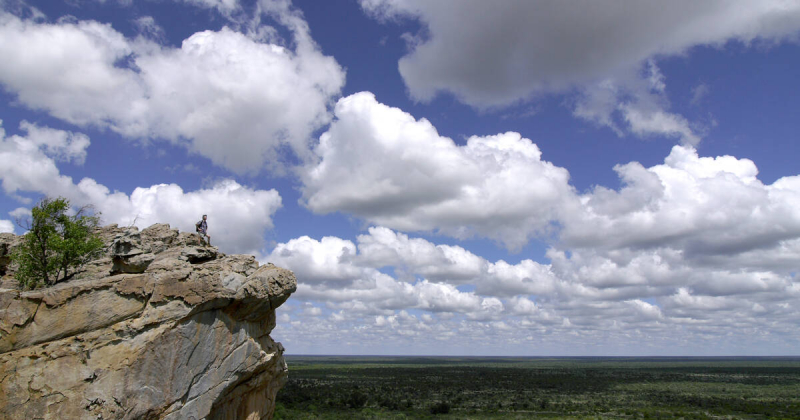
Photo: whc.unesco.org 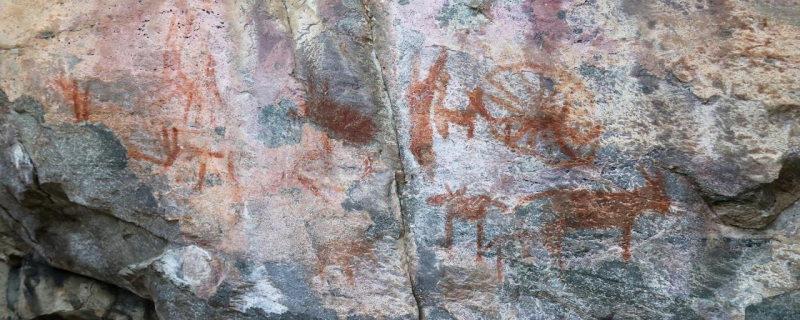
Photo: www.exploring-africa.com -
Old Palapye is a historically significant multicultural site with artifacts dating from the Middle Stone Age, Late Stone Age, and Early Iron Age. The settlement was the capital of the Bangwato (headed by Khama III) in the nineteenth century, who ruled the area from 1889 to 1902. Old Palapye is a historic site in Botswana, close to the town of Palapye. According to the people, Old Palapye and Palapye are two separate locations. Palapye is a modernized town. The site is 20 kilometers from Palapye town, and the locals refer to it as Malaka village. This monument site is known as Old Palapye because it has a history of ancient nature that distinguishes it from the town of Palapye.
Palapye has stone walls, middens, rock art, and the ruins of a jail, market center, and medieval tombs. The remnants of the London Missionary Society Church, erected between 1891 and 1894, are the most remarkable edifice. The front and rear of the burnt-brick shape are still standing, indicating the significant effort that went into its creation. Baboons, vervet monkeys, porcupines, rock dassies, and leopards are among the natural creatures that still roam the region. Two Cape Vulture breeding colonies exist, the largest of which is located in Gootau and has around 200 breeding pairs. To visit this place, contact the local headman, and take care not to disturb the birds.
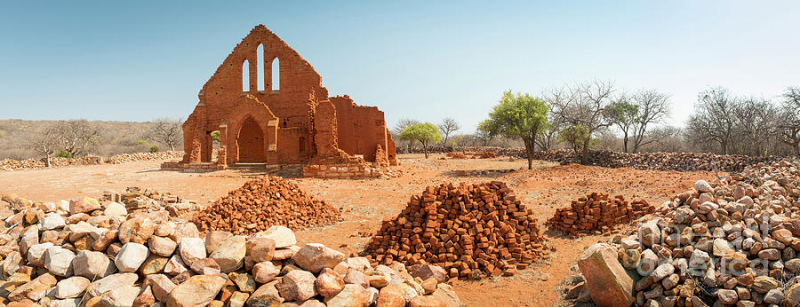
Photo: fineartamerica.com 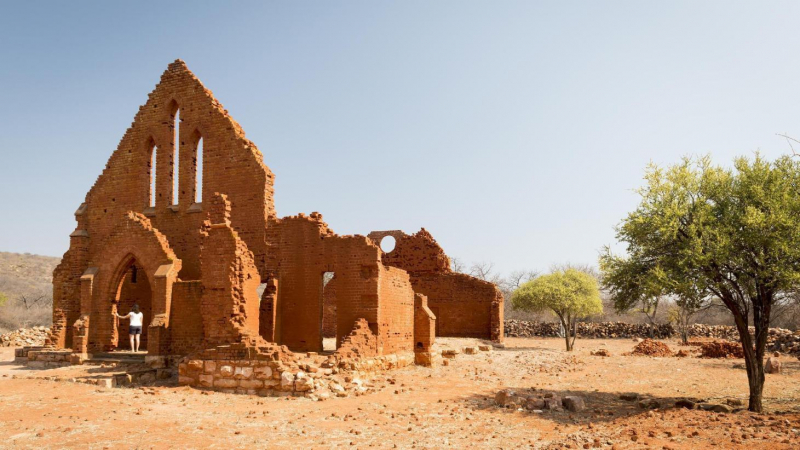
Photo: www.agoda.com -
Kolobeng was one of the first churches and formal schools in Botswana, founded by missionary doctor David Livingstone of the London Missionary Society. He was the first western medical practitioner to practice in Botswana. Built in 1847, the Kolobeng Mission (also known as the Livingstone Memorial) was the third and final mission of David Livingstone, an African missionary and explorer. Off the Thamaga-Kanye Road, 3 kilometers (1.9 miles) west of Kumakwane and 25 kilometers (16 miles) west of Gaborone in Botswana.
He established the mission here because of its proximity to the Kolobeng river, which was then renowned as "The river that never dries up." Bakwena was introduced to irrigation and European construction practices while he was there. This historical landmark in Botswana is well worth a visit. It was also here that he defeated his first Motswana convert, Kgosi Sechele I of Bakwena.
Kolobeng, some 20 kilometers west of Gaborone and just beyond the settlement of Gabane, was David Livingstone's third and final mission post. He constructed the home and the chapel here. This is where Jesus and his wife Mary would begin their work of converting the Bakwena to Christianity. Their daughter Elizabeth is buried here, having died at the age of six weeks. The house's foundation is all that is left at this location, which has been designated as a national monument.
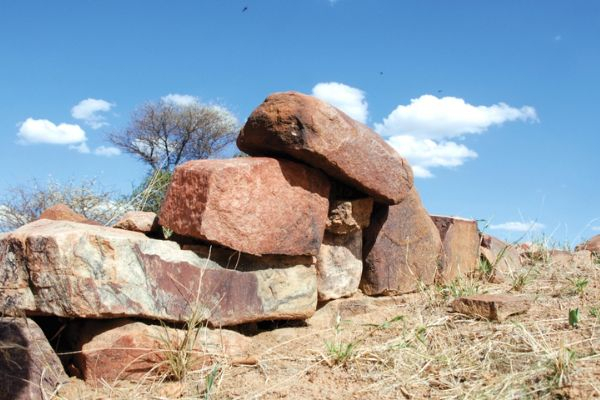
Photo: www.africa-wilderness-safaris.com 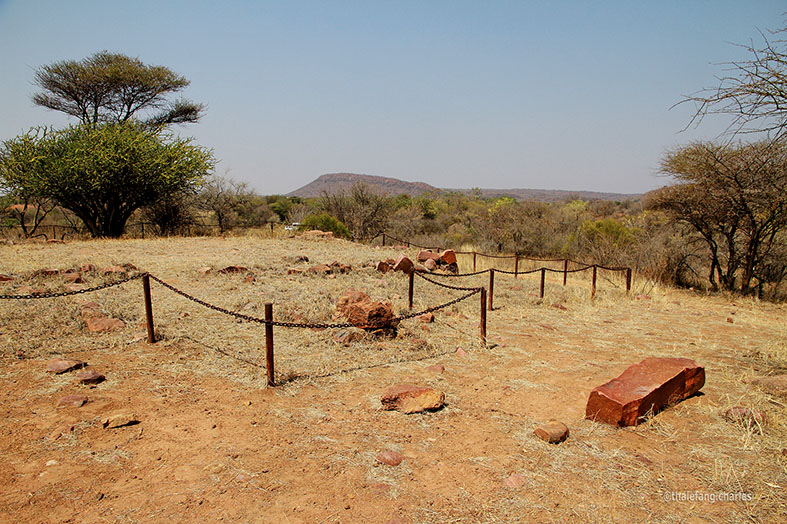
Photo: thalefang.wordpress.com -
Natural carvings known as Matsieng Footprints may be discovered throughout southern Botswana. Matsieng Footprints is one of the most famous historical sites in Botswana and the most well-known "Creation Sites" in southern Africa. The site's major feature is rock carvings, often known as petroglyphs. There are up to 117 engravings and three natural rock-holes on the site, which date from 3,000 to 10,000 years ago. Many of the tracks resemble human or feline footprints in appearance.
The Matsieng Footprints are located farther north on the main Gaborone to Francistown route, just past the community of Rasesa. A sandstone slab with two deep holes and carvings makes up this National Monument. According to legend, the Batswana's first ancestor, Matsieng, a big one-legged man, crawled out of one of the holes, accompanied by his people, domestic animals, and wildlife. The carvings, which are now very faint, were most likely created by Khoe herders in the early second millennium.
These are in the pattern of u-shaped footprints, with dots symbolizing animal tracks. In addition to the carvings, Matsieng Footprints has two huge holes. These may keep water for a long period depending on rainfall conditions. This famous Botswana monument has yet to be determined if the holes are natural or volcanic. The place is linked to a creation story that claims to explain cosmology. Matsieng is said to be one of the forefathers of the Sotho-Tswana, having emerged from the location with his people and animals.
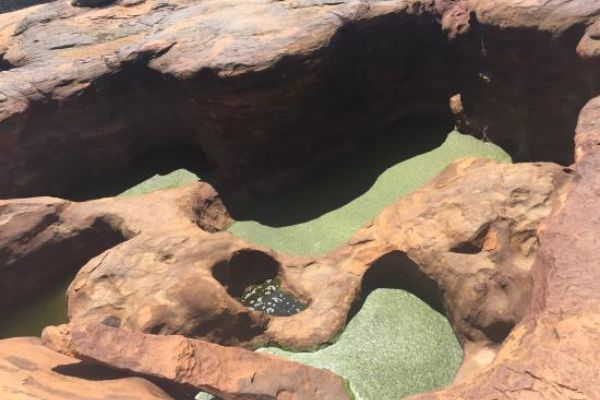
Photo: www.tripadvisor.com Video: The Mommy’s Island -
Several linked groupings of dolomite hills in Botswana's northwest region stand out against the surrounding sandveld. Just north of the town of Xai-Xai, the Aha hills straddle the Botswana/Namibia border. Gcwihaba Valley, with its fossil river, is 35 kilometers east of the settlement and has a cluster of six low-lying dolomite hills. Koanaka Hills, comprising three hills, are located 19 kilometers southwest of the Gcwihaba Caves. Gcwihaba is a cave in the Okavango Delta area of Botswana. Around 2 million years ago, the Gcwihaba Caves were part of the Kalahari environment, at least throughout the Pleistocene epoch. The cave's name is a San term that means "hyena's lair." The cave is around 10 kilometers from Namibia's border. The fact that all of these hills have caverns, collectively known as the Gcwihaba Caves, is fascinating.
Gcwihaba Caves were known to the world population in 1932, when they were revealed to Martinus Drotsky, a Ghanzi farmer. Drotsky's Caverns has become a common name for these caves. The dolomite marble of the Precambrian Damara Age was created when wetter circumstances and acidulated water seeping from underneath dissolved the rocks. As a result of a neighboring river developing, the water table was reduced. It is a Botswana ancient monument. The cave formations include magnificent stalactites and stalagmites that date back to 3-2 million years ago, as well as a diverse spectrum of cave forms.
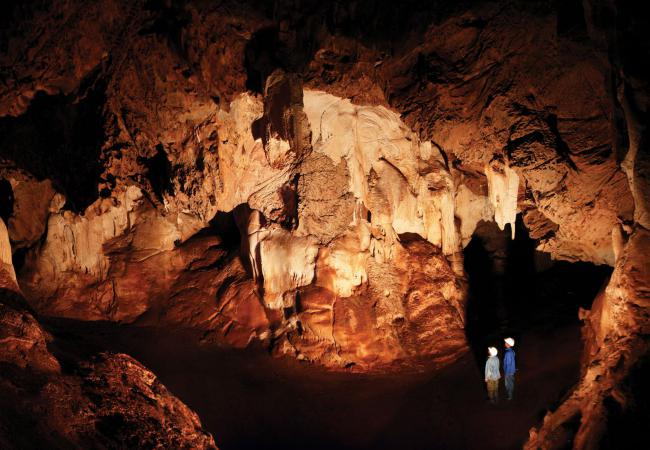
Photo: sadcmap.com Video: Dusty Road SA -
It was occupied towards the end of the Great Zimbabwe era and is made primarily of dry stone walls. It was a regional hub during the Khami period (1450-1690AD). The initial portion of the site is located on the hilltop. The second half of a valley is at a lower level. Six cages are located on the lower level and on the hill. The chief, along with several of his aides, is thought to have resided on the mountaintop. It is the most famous historical sites in Botswana. His women most likely dwelt in a large enclosure on the southern side of the daga floor buildings. Domboshaba is regarded as a holy spot by the locals. There are yearly rituals held at the location.
Domboshaba ruins are a cultural and historical site in Botswana that dates from the end of the Great Zimbabwe era (1250–1450 AD). The spot is revered by the locals, and it is thought that the chief resided on top of the hill with his aides or assistants. The words Dombo and Shaba signify hill and red, respectively (translated from the Ikalanga language means "red" or eland Hill). Domboshaba, also known as the Luswingo, was the Great Chief's settlement during the time. The Mwenemotapa ruins are similar in appearance. The chief's wife made her home at the bottom of the hill.The Well, a natural water well in Domboshaba, never runs dry: the well is 7 meters deep and is carved into the rock.
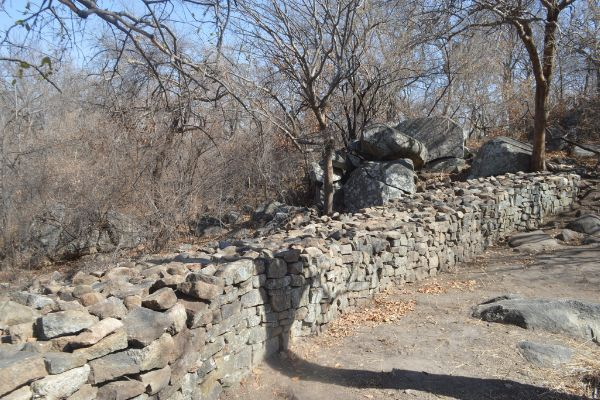
Photo: Twitter Video: Oaitse Kenosi Ntemba -
The Manyana Rock Paintings are a collection of rock art and caves in the Kolobeng Hills, near Manyana in Botswana's Southern District. The artworks are thought to have been created between 1100 and 1700 AD by the Khoikhoi or San people. Around the rocky slope, there are five cliff places where the paintings may be found. The location is now cordoned off and designated as a National Monument.
Manyana, aside from Tsodilo Hills, is one of the few rock art places that makes us ponder. It is less than an hour's drive from Gaborone and is one of Botswana's most accessible attractions and landmarks. There are various artworks strewn throughout the village's cliffs. They are thought to have been made as part of religious activity. People came here for various ceremonies on a regular basis, and it appears that this was a hallowed spot. Manyana is also one of the few rock art locations with black paintings.
The significance of Manyana Rock Paintings is because rock drawings are extremely rare in Botswana's southeast. Several artworks may be seen strewn throughout the village's cliffs. They're thought to have been made as part of religious rituals. It appears that this was a sacred spot where people came to perform particular rites on a regular basis. Manyana is also one of the rare black-painting rock art locations. Carbon 14 dating may be possible with them.
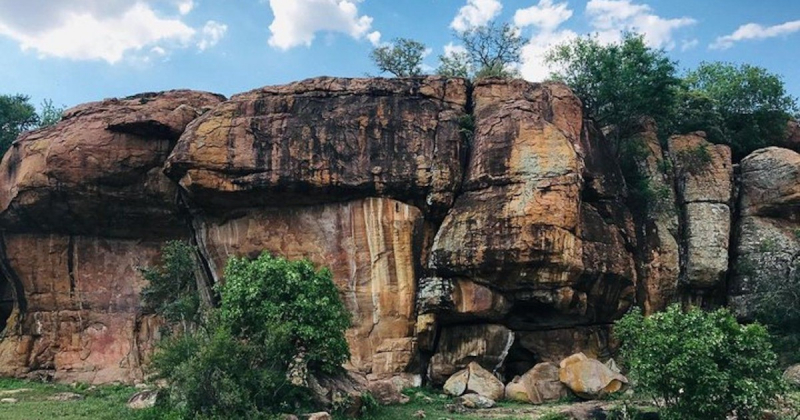
Photo: www.getyourguide.com 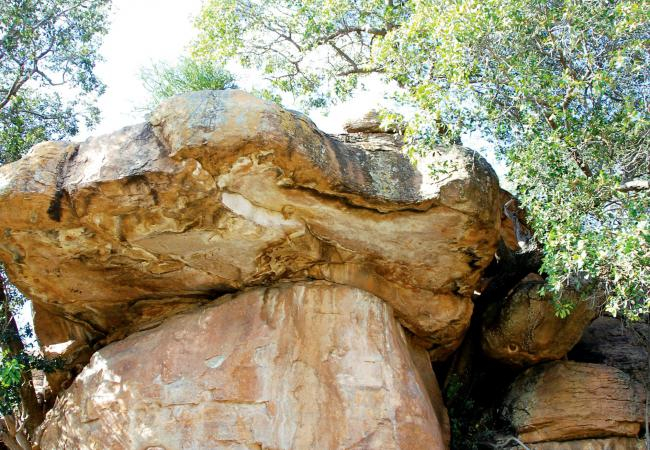
Photo: sadcmap.com









